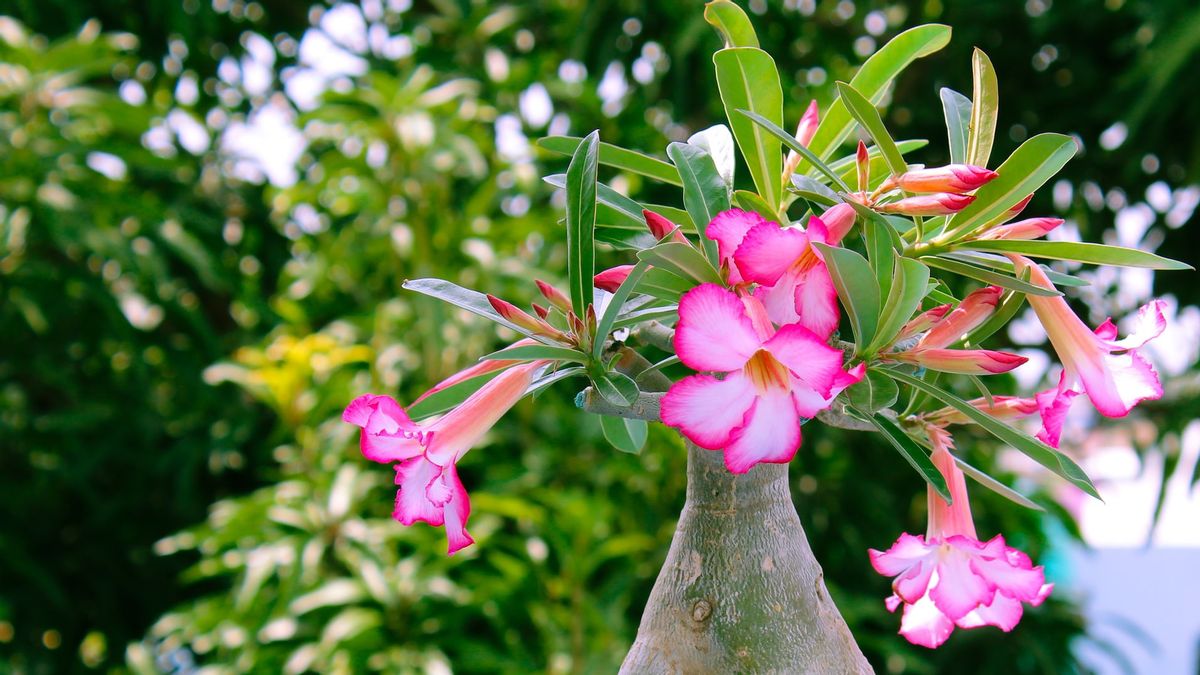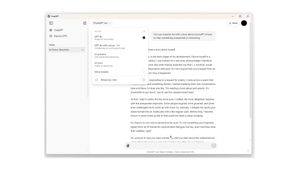JAKARTA – Adenium flower plants are also known as desert roses, in Indonesia they are popularly known as Japanese frangipani flowers. This plant is named the genus Adenium and was discovered since 1819. Its original habitat is in Africa and West Asia so it is often given the nickname desert rose.
Adenium flower varieties include adenium obesum, adenium arabicum, adenium socotranum, adenium somalense, adenium swazicum, and adenium boehmianum. The difference between each variety is seen in the character of the stem, growth structure, and flower color. But almost all varieties are a combination of pink, white, and red.
In order not to be easily attacked by pests, you can treat adenium flowers in the right way as follows:
1. Put it in a warm placeA warm location that is suitable for growing adenium flower plants is a place that is exposed to sunlight. This plant can flower for months in the summer. When the weather is cooler, it is natural for the flowers and leaves to fall.
You can place adenium flowers in front of a window or other location in the house that specifically faces south. Why go south, because they are not exposed to the heat of the sun during the day but can absorb the sun in the morning and evening.
2. Sandy and gravel soil mediaReported by The Spruce, Wednesday, November 10, this desert rose can adapt to dry conditions. That is, it can survive better with sandy and gravel soil media. Soil needs to have a neutral to acidic pH, ideally with a pH around 6.

The intensity of watering depends on the temperature and season. In the dry season, the soil media for growing adenium flowers needs to be kept moist but not saturated. You will need to periodically check the soil and allow it to dry completely before watering.
Most noteworthy again is the drainage of the pot. If it is too damp, adenium flower plants are prone to root rot, so it is recommended to use clay or terra cotta pots which can help reduce excess moisture.
In the rainy season, watering can be done at least once a week. You can see the condition of the stem, if the stem looks swollen and thick that is a good indication that the plant is well hydrated.
4. Pay attention to temperature and humidityPutting the adenium plant in the room, it is necessary to check the temperature and humidity. Too damp will make these plants die slowly. That is, if you put it indoors, you need to dry it in the morning or evening or put it on the edge of the window so that it is exposed to the sun.
5. Give fertilizer to help the flowering processFertilization can be done at least once a month during the period of active growth. You can give him a diluted liquid fertilizer. During the rainy season, avoid giving him fertilizer because it will be wasted when exposed to rainwater.
Pruning can be done on bony stems and damaged growth. Before trimming, sterilize trimming tools with a bleach or alcohol solution.
Things that inhibit the growth of adenium flower plants include the following:
Overwatering, this most often occurs so that it has an effect on the ease with which plants are attacked by pests and diseases. So, pay attention to the condition of the soil and stem media before watering it. Leaves turn yellow and fall due to root rot. Fungi are usually the cause of root rot. The right way to deal with it, remove the fallen leaves and cut the root pattern that is attacked by the fungus. Then apply a fungicide on the remaining roots. Powdery mildew leaves spots on the leaves. This pest can spread if not treated immediately. Generally, powdery mildew spreads during humid temperatures and warm days. If you find it on the stem, it needs to be pruned immediately. The spider mite bite leaves spots on the underside of the leaves. These pests suck the sap and cause the leaves to dry. To get rid of spider mites, spray water on the underside of all leaves. Repeat this method every 2-3 days and mix water with insecticidal soap and neem oil.The English, Chinese, Japanese, Arabic, and French versions are automatically generated by the AI. So there may still be inaccuracies in translating, please always see Indonesian as our main language. (system supported by DigitalSiber.id)













